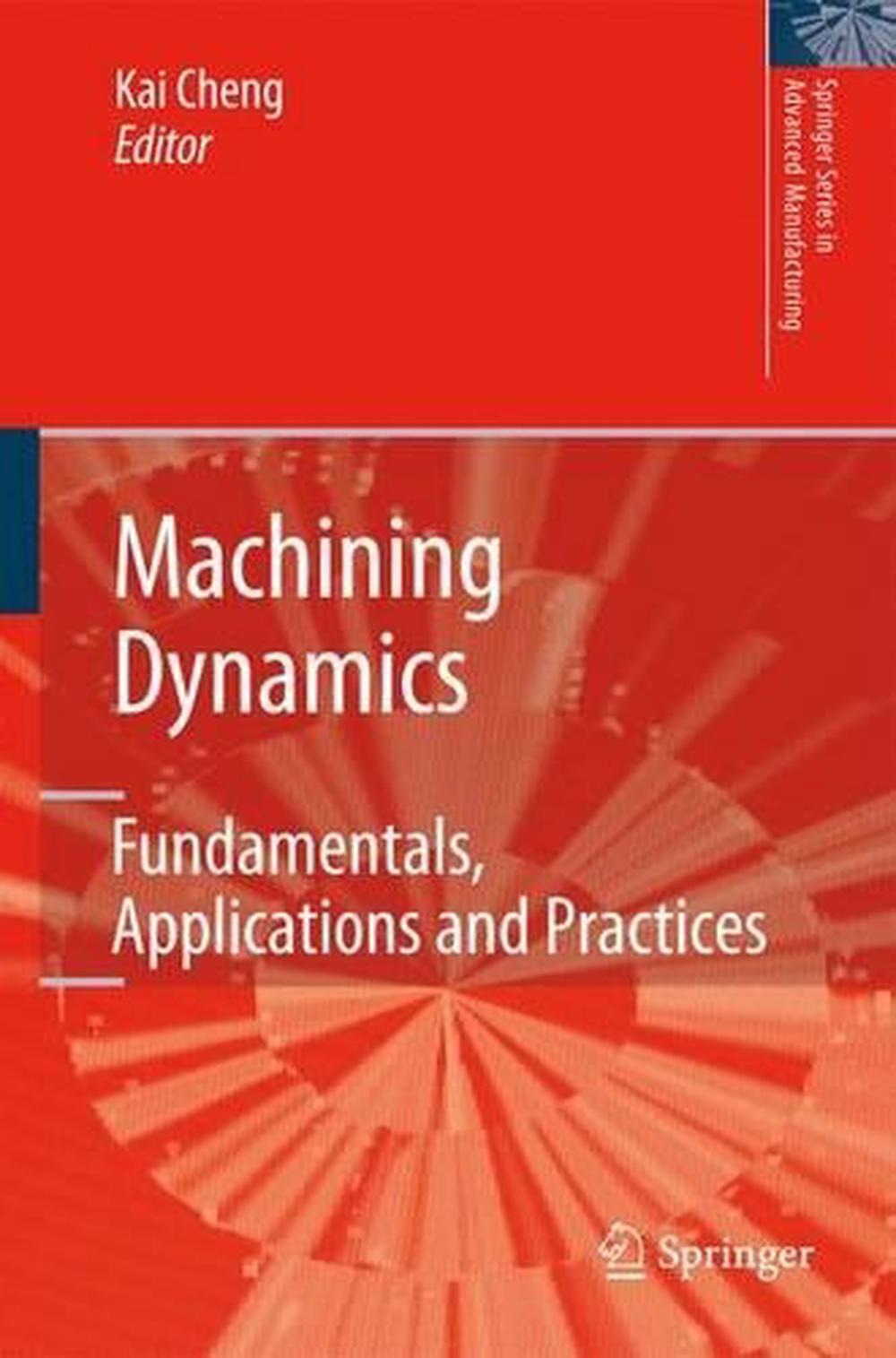
When you click on links to various merchants on this site and make a purchase, this can result in this site earning a commission. Affiliate programs and affiliations include, but are not limited to, the eBay Partner Network.
Machining Dynamics: Fundamentals, Applications and Practices by Kai Cheng (Engli

- Item No : 146577703600
- Condition : Brand New
- Brand : No brand Info
- Seller : the_nile
- Current Bid : US $232.61
-
* Item Description
-
The Nile on eBay

Machining Dynamics
by Kai Cheng
Machining dynamics are vital to the performance of machine tools and machining processes in manufacturing.
FORMAT
PaperbackLANGUAGE
EnglishCONDITION
Brand New
Publisher Description
Machining dynamics are vital to the performance of machine tools and machining processes in manufacturing. Advances in computational modelling, sensors, diagnostic equipment and analysis tools, 3D surface metrology and manufacturing science are providing a new perspective on the machining process.Written by experts in each field, this book discusses the state-of-the-art applications, practices and research in machining dynamics. Part 1 presents the basic theory, analysis and control methodology in addition to detailed modelling and diagnostic techniques, while Part 2 focuses on the applications of machining dynamics in machining processes such as turning, grinding, gear machining and non-traditional machining. Advanced undergraduate and postgraduate students studying manufacturing engineering and machining technology will find this book a comprehensive introduction. Manufacturing engineers, production supervisors, planning and application engineers and designers will find it a useful reference.
Back Cover
Machining dynamics play an essential role in the performance of machine tools and machining processes in manufacturing. Current advances in computational modelling, sensors, diagnostic equipment and analysis tools, 3D surface metrology and manufacturing science are giving researchers and practising engineers a new perspective on the machining process. Machining Dynamics: Fundamentals, Applications and Practices reflects the new integrated approach to studying machining dynamics by presenting state-of-the-art applications, practices and research in the field. Written by experts in each field, the first part of the book presents the basic theory, analysis and control methodology in addition to detailed modelling and diagnostic techniques for machining dynamics, while part two focuses on applying the fundamentals of machining dynamics in a variety of machining processes including turning, grinding, gear machining and non-traditional machining. Advanced undergraduate and postgraduate students studying manufacturing engineering and machining technology will find Machining Dynamics: Fundamentals, Applications and Practices a comprehensive and up-to-date introduction to the subject while the book's thoroughness allows it to serve as a useful reference for manufacturing engineers, production supervisors, planning and application engineers and designers.
Table of Contents
Basic Concepts and Theory.- Dynamic Analysis and Control.- Dynamics Diagnostics: Methods, Equipment and Analysis Tools.- Tool Design, Tool Wear and Tool Life.- Machining Dynamics in Turning Processes.- Machining Dynamics in Milling Processes.- Machining Dynamics in Grinding Processes.- Materials–induced Vibration in Single Point Diamond Turning.- Design of Precision Machines.
Review
From the reviews: [Machining Dynamics] can be used for final undergraduate engineering course (for example, manufacturing, mechanical, etc.) or as a subject on manufacturing at the postgraduate level. Also, this book can serve as a useful reference for academics, manufacturing researchers, mechanical and manufacturing engineers, professional in related industries with machine tools and machining processes. Davim, J.P. (2009) 'Machining Dynamics by Kai Cheng (Ed.)', Int. J. Machining and Machinability of Materials. "Machining dynamics is an important area for the advancement of national economies. ! This book is the work of 16 authors. ! This work can be used as an introduction to some of the science and engineering that lies at the foundation of the operation of these machine tools. Summing Up: Recommended. Upper-division undergraduates, graduate students, researchers, and faculty in manufacturing engineering." (A. M. Strauss, Choice, Vol. 46 (9), May, 2009)
Long Description
Machining dynamics play an essential role in the performance of machine tools and machining processes in manufacturing. Current advances in computational modelling, sensors, diagnostic equipment and analysis tools, 3D surface metrology and manufacturing science are giving researchers and practising engineers a new perspective on the machining process. Machining Dynamics: Fundamentals and Applications reflects the new integrated approach to studying machining dynamics by presenting state-of-the-art applications, practices and research in the field. Written by experts in each field, the first part of the book presents the basic theory, analysis and control methodology in addition to detailed modelling and diagnostic techniques for machining dynamics, while part two focuses on applying the fundamentals of machining dynamics in a variety of machining processes including turning, grinding, gear machining and non-traditional machining. Advanced undergraduate and postgraduate students studying manufacturing engineering and machining technology will find Machining Dynamics: Fundamentals and Applications a comprehensive and up-to-date introduction to the subject while the book's thoroughness allows it to serve as a useful reference for manufacturing engineers, production supervisors, planning and application engineers and designers.
Review Quote
From the reviews:[Machining Dynamics] can be used for final undergraduate engineering course (for example, manufacturing, mechanical, etc.) or as a subject on manufacturing at the postgraduate level. Also, this book can serve as a useful reference for academics, manufacturing researchers, mechanical and manufacturing engineers, professional in related industries with machine tools and machining processes.Davim, J.P. (2009) Machining Dynamics by Kai Cheng (Ed.) ", Int. J. Machining and Machinability of Materials."Machining dynamics is an important area for the advancement of national economies. This book is the work of 16 authors. This work can be used as an introduction to some of the science and engineering that lies at the foundation of the operation of these machine tools. Summing Up: Recommended. Upper-division undergraduates, graduate students, researchers, and faculty in manufacturing engineering." (A. M. Strauss, Choice, Vol. 46 (9), May, 2009)
Feature
Reflects the new integrated approach to studying machining dynamics by presenting the state-of-the-art applications, practices and research in this field Each chapter is written by a specialist in that particular field, with contributors spanning six countries and four continents
Details
ISBN1849965897Publisher Springer London LtdSeries Springer Series in Advanced ManufacturingYear 2010ISBN-10 1849965897ISBN-13 9781849965897Format PaperbackPublication Date 2010-10-28Imprint Springer London LtdPlace of Publication EnglandCountry of Publication United KingdomEdited by Kai ChengEdition 1stShort Title MACHINING DYNAMICSLanguage EnglishMedia BookDEWEY 620Subtitle Fundamentals, Applications and PracticesPages 328AU Release Date 2010-10-28NZ Release Date 2010-10-28UK Release Date 2010-10-28Author Kai ChengAlternative 9781846283673Illustrations XVIII, 328 p.Audience Professional & VocationalEdition Description 1st ed. Softcover of orig. ed. 2009


-
- The Lost Super Foods
- $ 37.00
- The Self-Sufficient Backyard
- $ 37.00
- A Navy Seals BUG IN GUIDE
- $ 39.00
- Childrens Books Phonics Lot 60
- $ 34.99
















